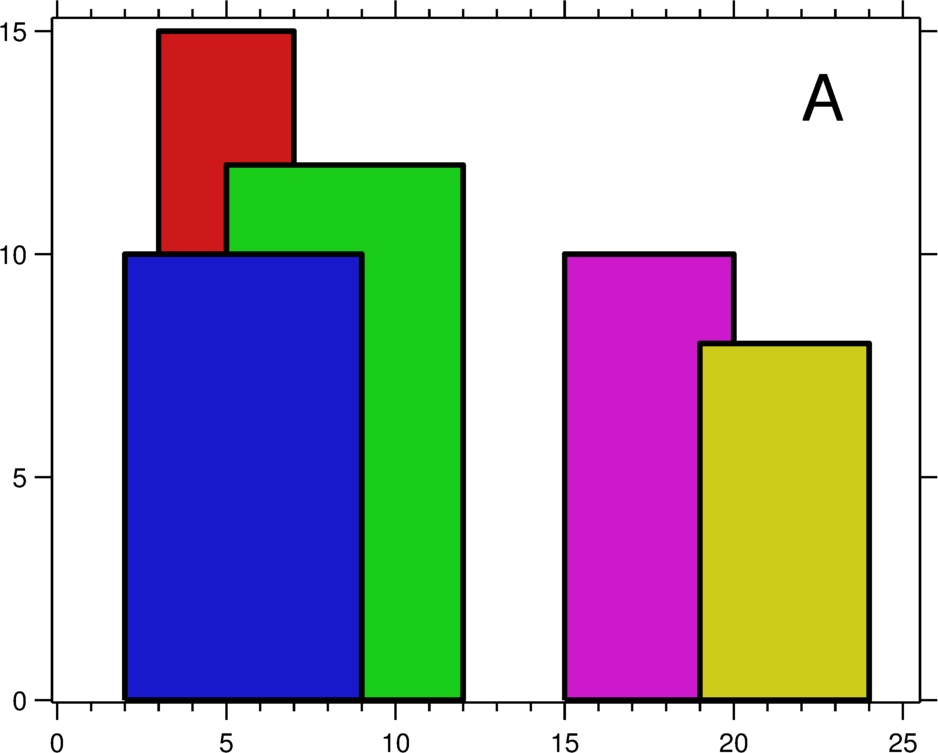LeetCode day35
Diffculty: Hard
212. Word Search II
Topic: Trie, Backtracking
Given a 2D board and a list of words from the dictionary, find all words in the board.
Each word must be constructed from letters of sequentially adjacent cell, where “adjacent” cells are those horizontally or vertically neighboring. The same letter cell may not be used more than once in a word.
Example:
Input:
board = [
['o','a','a','n'],
['e','t','a','e'],
['i','h','k','r'],
['i','f','l','v']
]
words = ["oath","pea","eat","rain"]
Output: ["eat","oath"]Note:
- All inputs are consist of lowercase letters a-z.
- The values of words are distinct.
Approach1
Approach2
218. The Skyline Problem
Topic: Divide and Conquer, Heap, Binary Indexed Tree, Segment Tree, Line Sweep
A city’s skyline is the outer contour of the silhouette formed by all the buildings in that city when viewed from a distance. Now suppose you are given the locations and height of all the buildings as shown on a cityscape photo (Figure A), write a program to output the skyline formed by these buildings collectively (Figure B).
 Buildings Skyline Contour
Buildings Skyline Contour
The geometric information of each building is represented by a triplet of integers [Li, Ri, Hi], where Li and Ri are the x coordinates of the left and right edge of the ith building, respectively, and Hi is its height. It is guaranteed that 0 ≤ Li, Ri ≤ INT_MAX, 0 < Hi ≤ INT_MAX, and Ri - Li > 0. You may assume all buildings are perfect rectangles grounded on an absolutely flat surface at height 0.
For instance, the dimensions of all buildings in Figure A are recorded as: [ [2 9 10], [3 7 15], [5 12 12], [15 20 10], [19 24 8] ] .
The output is a list of “key points” (red dots in Figure B) in the format of [ [x1,y1], [x2, y2], [x3, y3], … ] that uniquely defines a skyline. A key point is the left endpoint of a horizontal line segment. Note that the last key point, where the rightmost building ends, is merely used to mark the termination of the skyline, and always has zero height. Also, the ground in between any two adjacent buildings should be considered part of the skyline contour.
For instance, the skyline in Figure B should be represented as:[ [2 10], [3 15], [7 12], [12 0], [15 10], [20 8], [24, 0] ].
Notes:
- The number of buildings in any input list is guaranteed to be in the range [0, 10000].
- The input list is already sorted in ascending order by the left x position Li.
- The output list must be sorted by the x position.
- There must be no consecutive horizontal lines of equal height in the output skyline. For instance, […[2 3], [4 5], [7 5], [11 5], [12 7]…] is not acceptable; the three lines of height 5 should be merged into one in the final output as such: […[2 3], [4 5], [12 7], …]
Approach1
Approach2
239. Sliding Window Maximum
Topic: Heap, Sliding Window
Given an array nums, there is a sliding window of size k which is moving from the very left of the array to the very right. You can only see the k numbers in the window. Each time the sliding window moves right by one position. Return the max sliding window.
Follow up: Could you solve it in linear time?
Example:
Input: nums = [1,3,-1,-3,5,3,6,7], and k = 3
Output: [3,3,5,5,6,7]
Explanation:
Window position Max
--------------- -----
[1 3 -1] -3 5 3 6 7 3
1 [3 -1 -3] 5 3 6 7 3
1 3 [-1 -3 5] 3 6 7 5
1 3 -1 [-3 5 3] 6 7 5
1 3 -1 -3 [5 3 6] 7 6
1 3 -1 -3 5 [3 6 7] 7Constraints:
- 1 <= nums.length <= 10^5
- -10^4 <= nums[i] <= 10^4
- 1 <= k <= nums.length
Approach1
Approach2
269. Alien Dictionary
Topic:
There is a new alien language which uses the latin alphabet. However, the order among letters are unknown to you. You receive a list of non-empty words from the dictionary, where words are sorted lexicographically by the rules of this new language. Derive the order of letters in this language.
Example 1:
Input:
[
"wrt",
"wrf",
"er",
"ett",
"rftt"
]
Output: "wertf"Example 2:
Input:
[
"z",
"x"
]
Output: "zx"Example 3:
Input:
[
"z",
"x",
"z"
]
Output: ""
Explanation: The order is invalid, so return "".Note:
- You may assume all letters are in lowercase.
- You may assume that if a is a prefix of b, then a must appear before b in the given dictionary.
- If the order is invalid, return an empty string.
- There may be multiple valid order of letters, return any one of them is fine.
Approach1
Approach2